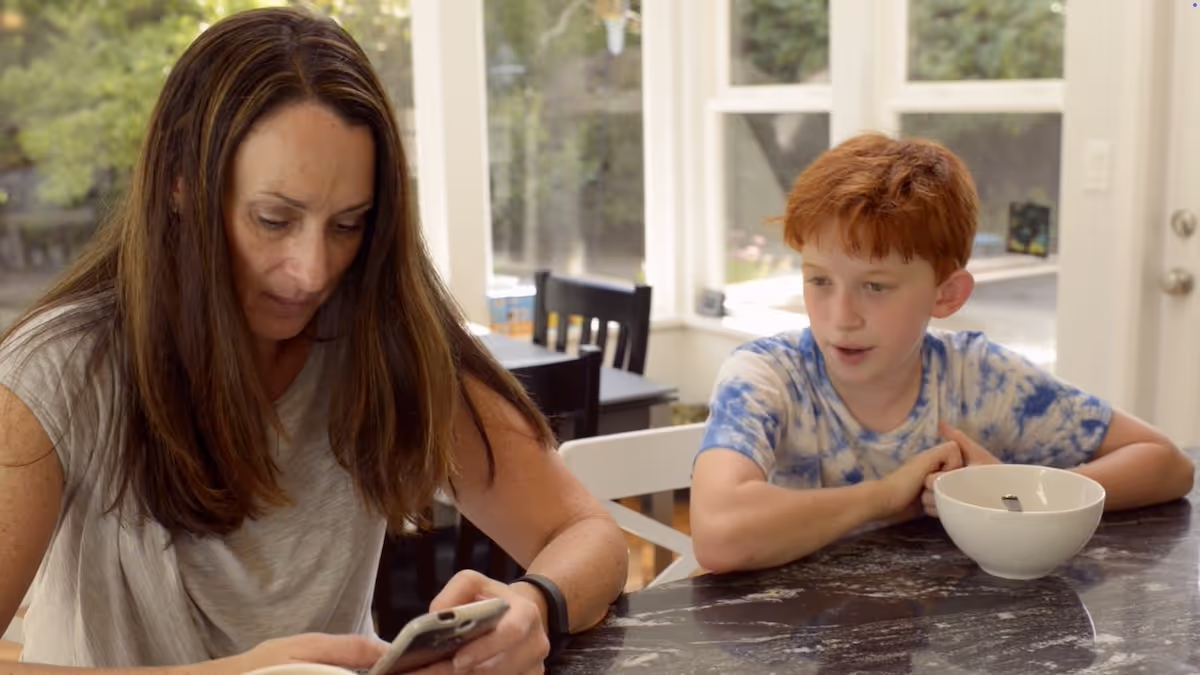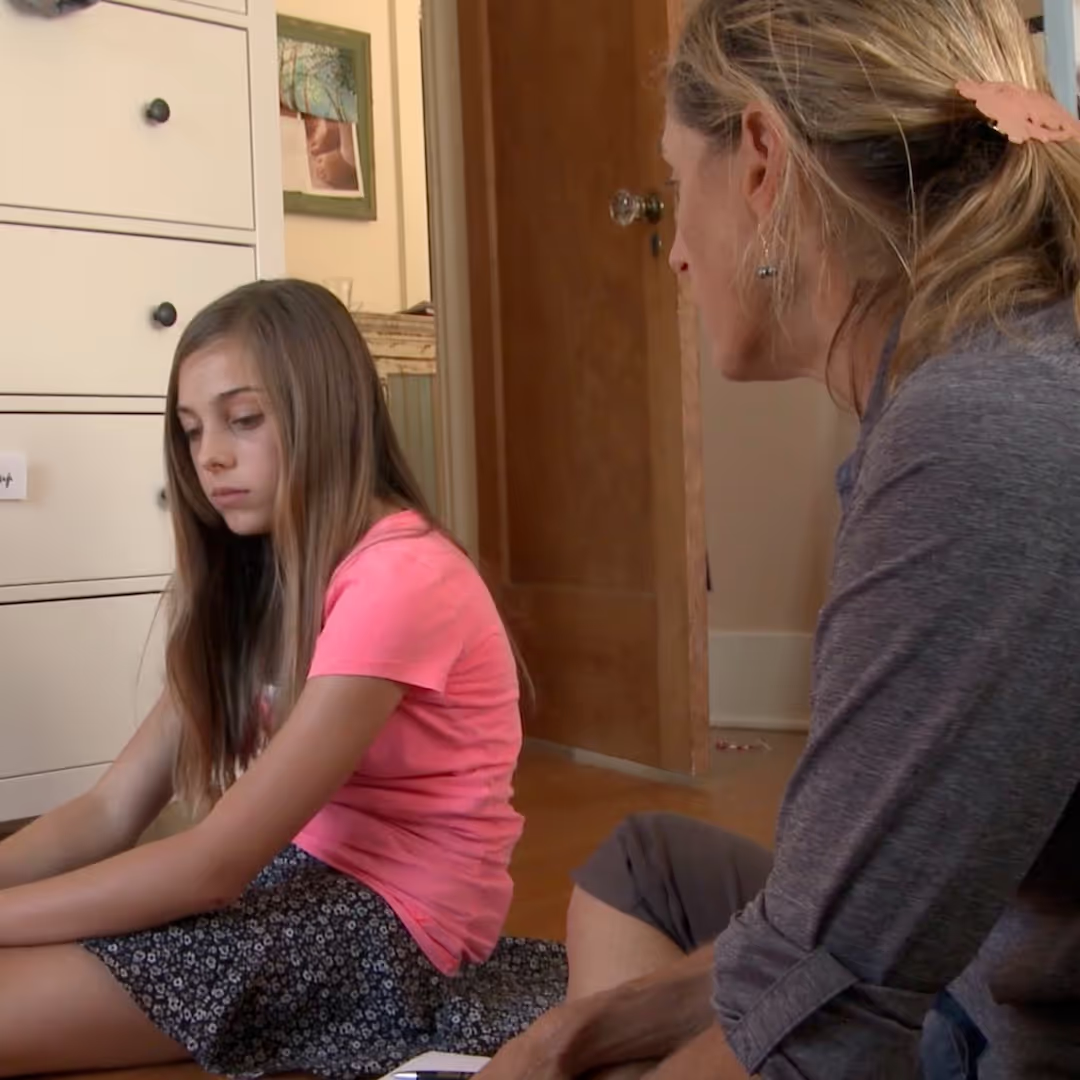



My obsession with helping families parent around screen time is emotion-laden (this is about our kids so of course, it’s emotional) but also data-driven.
Before I went to medical school, I was a researcher at the National Institutes of Health. After my medical training I did more research in communications and ethics. I love good data. We need good data.
That said, we recently conducted a small survey of people from our Screenagers email list and I will be the first to say this is a biased sample. Respondents were not chosen at random but were found through their interest in Screenagers. But, the good thing is we can still glean insights from this data about family rules.
Prior to the survey, I had ideas on rules based on my experience, interviews with hundreds of kids, teens, and parents and extensive research review. I have come up with 4 rules that I think households should strongly consider implementing. (Even if you have older teens, know that it is never too late). Here they are, and below them, you will find the results of our survey:
4 KEY SCREEN TIME RULES
For TTT this week talk with your family (or students) about these rules:
Survey of Screenagers email list—200 parents responded
1. Question: Can devices be in the bedroom?
92% of respondents allow devices in their children’s rooms at night. There is clear data how devices in bedrooms negatively affect sleep.
2. Question: Do you allow your kids to respond to texts, messages, Snapchats while doing homework?
30% of the respondents allow their kids to respond to texts, messages, Snapchats while doing homework.
One respondent wrote:
"Yes [they can use computers and phones], but they are both very diligent workers so they usually ignore their phones in order to get the homework done."
Another wrote:
"No devices while doing homework. But as the kids age and need access to information, I imagine this will change."
3. Question: Can you have your device out at meals?
20% of respondents said that they allow devices out during meals. Here are some of the rules that people shared:
"If devices are brought to the table, they have to be stacked face down and the first person to touch their device has to wash up."
"[We don't] but the husband/father [in our house] does some, claiming he is still working as we eat at 6 PM and he works from home, and he always seems to have an excuse to pull out his iPhone in the 20 minutes we sit down to a meal and it is a sore spot for the wife and kid."
"We make exceptions when a family discussion leads to a question and we look something up on Google, IMDB, etc. (We're a family that also keeps a dictionary and world atlas near the dinner table for the same reason.)"
4. Question: Are there rules around amount of screen time and or type of gaming?
75% of parents responded that they do not have rules around the amount of time and or type of gaming their kids do.
Here are some examples they shared with us:
"Gaming is only allowed Fridays-Sundays, but no limits on those days. Gaming is in living areas. Games of all ratings are allowed, but M ratings are previewed and any with sexual or drug content are not allowed."
"No midweek gaming unless you have straight As. Unlimited gaming on weekends if you haven't lost the privilege."
As well as our weekly blog, we publish videos like this one every week on the Screenagers YouTube channel
Learn more about showing our movies in your school or community!
Join Screenagers filmmaker Delaney Ruston MD for our latest Podcast

Learn more about our Screen-Free Sleep campaign at the website!
Our movie made for parents and educators of younger kids
Learn more about showing our movies in your school or community!
Learn more about showing our movies in your school or community!
Join Screenagers filmmaker Delaney Ruston MD for our latest Podcast

Learn more about our Screen-Free Sleep campaign at the website!
Our movie made for parents and educators of younger kids
Join Screenagers filmmaker Delaney Ruston MD for our latest Podcast
As we’re about to celebrate 10 years of Screenagers, we want to hear what’s been most helpful and what you’d like to see next.
Please click here to share your thoughts with us in our community survey. It only takes 5–10 minutes, and everyone who completes it will be entered to win one of five $50 Amazon vouchers.

My obsession with helping families parent around screen time is emotion-laden (this is about our kids so of course, it’s emotional) but also data-driven.
Before I went to medical school, I was a researcher at the National Institutes of Health. After my medical training I did more research in communications and ethics. I love good data. We need good data.
That said, we recently conducted a small survey of people from our Screenagers email list and I will be the first to say this is a biased sample. Respondents were not chosen at random but were found through their interest in Screenagers. But, the good thing is we can still glean insights from this data about family rules.
Prior to the survey, I had ideas on rules based on my experience, interviews with hundreds of kids, teens, and parents and extensive research review. I have come up with 4 rules that I think households should strongly consider implementing. (Even if you have older teens, know that it is never too late). Here they are, and below them, you will find the results of our survey:
4 KEY SCREEN TIME RULES
For TTT this week talk with your family (or students) about these rules:
Survey of Screenagers email list—200 parents responded
1. Question: Can devices be in the bedroom?
92% of respondents allow devices in their children’s rooms at night. There is clear data how devices in bedrooms negatively affect sleep.
2. Question: Do you allow your kids to respond to texts, messages, Snapchats while doing homework?
30% of the respondents allow their kids to respond to texts, messages, Snapchats while doing homework.
One respondent wrote:
"Yes [they can use computers and phones], but they are both very diligent workers so they usually ignore their phones in order to get the homework done."
Another wrote:
"No devices while doing homework. But as the kids age and need access to information, I imagine this will change."
3. Question: Can you have your device out at meals?
20% of respondents said that they allow devices out during meals. Here are some of the rules that people shared:
"If devices are brought to the table, they have to be stacked face down and the first person to touch their device has to wash up."
"[We don't] but the husband/father [in our house] does some, claiming he is still working as we eat at 6 PM and he works from home, and he always seems to have an excuse to pull out his iPhone in the 20 minutes we sit down to a meal and it is a sore spot for the wife and kid."
"We make exceptions when a family discussion leads to a question and we look something up on Google, IMDB, etc. (We're a family that also keeps a dictionary and world atlas near the dinner table for the same reason.)"
4. Question: Are there rules around amount of screen time and or type of gaming?
75% of parents responded that they do not have rules around the amount of time and or type of gaming their kids do.
Here are some examples they shared with us:
"Gaming is only allowed Fridays-Sundays, but no limits on those days. Gaming is in living areas. Games of all ratings are allowed, but M ratings are previewed and any with sexual or drug content are not allowed."
"No midweek gaming unless you have straight As. Unlimited gaming on weekends if you haven't lost the privilege."
As well as our weekly blog, we publish videos like this one every week on the Screenagers YouTube channel
Sign up here to receive the weekly Tech Talk Tuesdays newsletter from Screenagers filmmaker Delaney Ruston MD.
We respect your privacy.

My obsession with helping families parent around screen time is emotion-laden (this is about our kids so of course, it’s emotional) but also data-driven.
Before I went to medical school, I was a researcher at the National Institutes of Health. After my medical training I did more research in communications and ethics. I love good data. We need good data.
That said, we recently conducted a small survey of people from our Screenagers email list and I will be the first to say this is a biased sample. Respondents were not chosen at random but were found through their interest in Screenagers. But, the good thing is we can still glean insights from this data about family rules.
Prior to the survey, I had ideas on rules based on my experience, interviews with hundreds of kids, teens, and parents and extensive research review. I have come up with 4 rules that I think households should strongly consider implementing. (Even if you have older teens, know that it is never too late). Here they are, and below them, you will find the results of our survey:
4 KEY SCREEN TIME RULES
For TTT this week talk with your family (or students) about these rules:
Survey of Screenagers email list—200 parents responded
1. Question: Can devices be in the bedroom?
92% of respondents allow devices in their children’s rooms at night. There is clear data how devices in bedrooms negatively affect sleep.
2. Question: Do you allow your kids to respond to texts, messages, Snapchats while doing homework?
30% of the respondents allow their kids to respond to texts, messages, Snapchats while doing homework.
One respondent wrote:
"Yes [they can use computers and phones], but they are both very diligent workers so they usually ignore their phones in order to get the homework done."
Another wrote:
"No devices while doing homework. But as the kids age and need access to information, I imagine this will change."
3. Question: Can you have your device out at meals?
20% of respondents said that they allow devices out during meals. Here are some of the rules that people shared:
"If devices are brought to the table, they have to be stacked face down and the first person to touch their device has to wash up."
"[We don't] but the husband/father [in our house] does some, claiming he is still working as we eat at 6 PM and he works from home, and he always seems to have an excuse to pull out his iPhone in the 20 minutes we sit down to a meal and it is a sore spot for the wife and kid."
"We make exceptions when a family discussion leads to a question and we look something up on Google, IMDB, etc. (We're a family that also keeps a dictionary and world atlas near the dinner table for the same reason.)"
4. Question: Are there rules around amount of screen time and or type of gaming?
75% of parents responded that they do not have rules around the amount of time and or type of gaming their kids do.
Here are some examples they shared with us:
"Gaming is only allowed Fridays-Sundays, but no limits on those days. Gaming is in living areas. Games of all ratings are allowed, but M ratings are previewed and any with sexual or drug content are not allowed."
"No midweek gaming unless you have straight As. Unlimited gaming on weekends if you haven't lost the privilege."
As well as our weekly blog, we publish videos like this one every week on the Screenagers YouTube channel


Parenting in this digital age is full of challenges. I imagine many of you are nodding in agreement. And when we look for advice online, it can feel like a sea of perfect experts with perfect advice: “Just follow these three easy steps and everything will fall into place.” In this week’s blog, I share a story about a moment with my daughter Tessa that did not go quite as planned but ended up teaching us both something important.
READ MORE >
Wow! Summer really goes by fast, doesn’t it? Back-to-school is already here for some and not far away for others. Ahead of this school year, I’ve hand-picked four of our most useful blogs. Practical, timely guides to help you set your family up for a healthier, more balanced relationship with technology in the months ahead.
READ MORE >for more like this, DR. DELANEY RUSTON'S NEW BOOK, PARENTING IN THE SCREEN AGE, IS THE DEFINITIVE GUIDE FOR TODAY’S PARENTS. WITH INSIGHTS ON SCREEN TIME FROM RESEARCHERS, INPUT FROM KIDS & TEENS, THIS BOOK IS PACKED WITH SOLUTIONS FOR HOW TO START AND SUSTAIN PRODUCTIVE FAMILY TALKS ABOUT TECHNOLOGY AND IT’S IMPACT ON OUR MENTAL WELLBEING.
